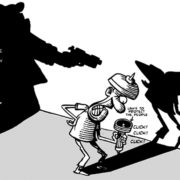THE Philippines was ranked 87 out of 141 countries, in Forbes’ annual look at the Best Countries for Business. With a 3.7 percent GDP growth and inflation rate of 4.8 percent, the country maintained its position from last year and remained at the bottom half of the list.
The country outranked China and India, but still lags behind its Asian neighbors: Japan, Taiwan, Malaysia, Thailand, Indonesia, Hong Kong and Singapore. New Zealand bested the world’s biggest economies, while Guinea lingers at the bottom of the heap, as the worst country to do business in. The United States continued to to decline, from falling to second spot last year, to being ranked 12th this year.
“We are satisfied for the time being. But, moving forward, we hope to see the improvements in the ranking. We also note that the ranking went up in terms of monetary freedom and in innovation, and this is very important. Likewise, we went up in terms of the ranking for investor protection,” Malacañang Deputy Presidential Spokesperson Abigail Valte said.
Forbes graded 141 countries in its annual list based on 11 different factors: property rights, innovation, taxes, technology, corruption, freedom (personal, trade and monetary), red tape, investor protection and stock market performance.
“The (Philippine) economy weathered the 2008-09 global recession better than its regional peers due to minimal exposure to troubled international securities, lower dependence on exports, relatively resilient domestic consumption, large remittances from four- to five-million overseas Filipino workers, and a growing business process outsourcing industry,” Forbes posted as the country’s profile.
However, the American business magazine noted that “the economy still faces several long-term challenges, including reliance on energy imports and foreign demand for overseas Filipino workers.”
The Philippine economy sustained a remarkable run in 2012, posting a 5.9 percent growth in the second quarter. The improvement was attributed to the expansion in services sector, including the growing business outsourcing industry. Other top contributors that fuelled resurgence in economic activities are communication, real estate, trade and financial services, and remittances.
Other achievements of the government, under the leadership of President Aquino, include triumph against corruption, poverty reduction, campaign against smugglers and tax evaders, lower crime rates, increased foreign investments, enhanced public works activities, and peace negotiations with Islamist and communist insurgents.
While these accomplishments are credible and valid, other palpable challenges remain, daunting the Philippines to reach its full potential.
Maintaining the local economy’s growth and to generate high quality jobs for the unskilled labor force are some of the main obstacles, the Philippines has to address. Although crimes are held back to a tolerable level, recent news of kidnapping, human and drug trafficking, and robbery, escalate the culture of violence in the country.
Unabated population growth remains an alarming problem. The process of feeding and employing an overpopulated demographic cancel out successes the government has made so far.
If we are to contain the common malaise of the many problems facing the country, the passage of the RH Bill would be a good start. Other strides the government has to make are improvements in healthcare, education and technology.
When you are at the bottom, there is nowhere to go but up. Despite numerous panegyrics and recognition from the international community, the Philippines has yet to prove itself as a dynamic economy.
These challenges are not unique to the Filipino nation, but shared throughout the world. Many advanced countries have had to overcome the same set of issues, even tougher hurdles. Countries ahead of the pact have lessons to resonate with those at lower latitudes: Effective political leaderships and key reforms result to fundamental transformation.
(AJPress)







